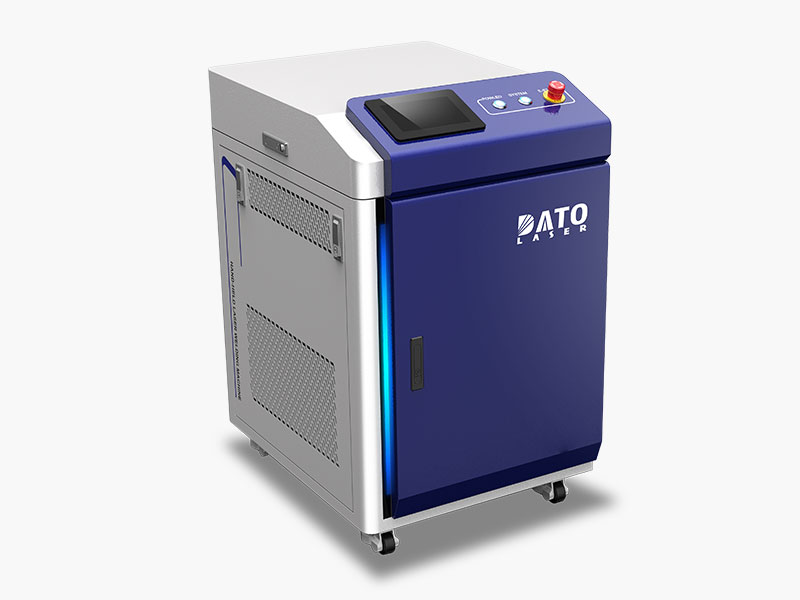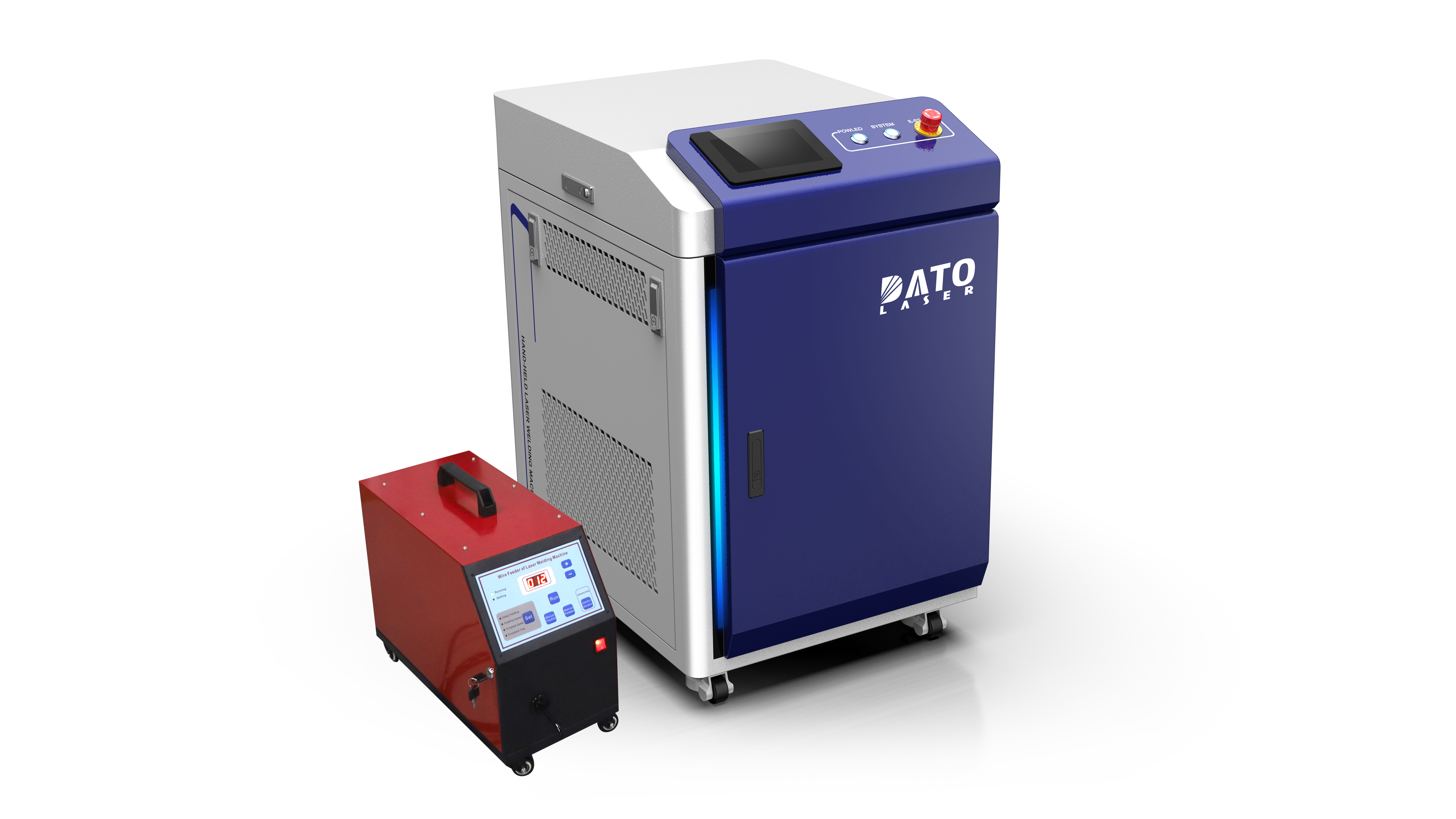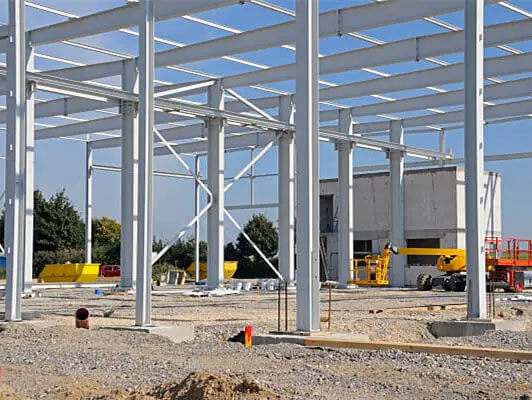Mastering High-Quality Welds in Reflective Materials: Expert Guide to Copper and Aluminum Laser Welding

Introduction to Reflective Material Welding Challenges

At DATO & Leapion, we understand that welding highly reflective materials presents unique challenges that require specialized expertise and advanced technology. Through our extensive experience in laser welding technology, we've developed comprehensive solutions for working with materials like copper and aluminum. These materials, while essential in modern manufacturing, pose significant challenges due to their physical properties and thermal characteristics.
Understanding Material Properties and Their Impact
The Science Behind Copper Welding
Copper's unique properties make it one of the most challenging materials to weld effectively. With a thermal conductivity approximately six times higher than steel and a surface reflectivity of nearly 98% at the standard 1064nm wavelength, copper demands specialized welding approaches. Our research has shown that successful copper welding requires precise control over multiple parameters simultaneously.
The high thermal conductivity of copper means that heat dissipates rapidly throughout the material, making it difficult to maintain the necessary temperature at the weld point. This characteristic often requires higher power inputs and more precise energy delivery methods compared to traditional materials. Additionally, copper's high reflectivity means that most of the laser energy is initially reflected rather than absorbed, potentially causing stability issues and requiring specialized optical systems.
Aluminum Welding Complexities
Aluminum presents its own set of unique challenges in laser welding applications. The presence of a naturally occurring oxide layer, while providing corrosion resistance, significantly impacts the welding process. This oxide layer has a melting point approximately three times higher than the base aluminum, requiring specific techniques to achieve consistent, high-quality welds.
Furthermore, aluminum's thermal conductivity, while lower than copper, is still significantly higher than steel. This property creates challenges in controlling the weld pool and maintaining consistent penetration depth. Our experience has shown that successful aluminum welding requires careful attention to surface preparation and precise control of welding parameters.
Advanced Technology Solutions for Reflective Materials
High-Power Fiber Laser Systems Integration
Modern fiber laser welding of reflective materials relies heavily on advanced technology integration. Our latest systems incorporate sophisticated power control mechanisms that can adjust in real-time to changing material conditions. These systems utilize closed-loop control algorithms that monitor and adjust multiple parameters simultaneously:
The power delivery system maintains exceptional stability through advanced feedback mechanisms. This stability is crucial when working with reflective materials, as power fluctuations can significantly impact weld quality. Our systems continuously monitor and adjust power levels thousands of times per second, ensuring consistent energy delivery throughout the welding process.
We've implemented beam shaping technology that allows for dynamic adjustment of the laser beam profile during welding. This capability enables us to optimize energy distribution based on specific material requirements and joint geometries. For instance, when welding copper, we can utilize a broader beam profile initially to improve energy absorption, then transition to a more focused profile for deeper penetration.
Specialized Beam Delivery Systems Innovation
Our beam delivery systems represent the cutting edge of laser welding technology. These systems incorporate multiple innovations designed specifically for reflective material processing:
The multi-focus optical system allows for precise control over the energy distribution within the weld zone. By manipulating multiple focal points simultaneously, we can achieve better control over the weld pool dynamics and heat distribution. This technology has proven particularly effective when welding varying thickness materials or in applications requiring precise heat control.
Beam oscillation technology provides additional control over the welding process. By rapidly moving the beam in controlled patterns, we can effectively manage heat input and improve weld quality. This technique has shown particular success in reducing porosity and improving weld consistency in both copper and aluminum applications.
Process Parameter Optimization for Maximum Efficiency
Advanced Power and Speed Configuration
The relationship between laser power and welding speed is critical when working with reflective materials. Our research has led to the development of sophisticated parameter sets that optimize this relationship:
Initial power ramp-up protocols are carefully designed to establish proper keyhole formation while minimizing the risk of reflection-related issues. This involves a precisely controlled increase in power that takes into account the material's changing absorption characteristics as temperature increases. We've found that proper power ramp-up can reduce spatter by up to 80% compared to traditional approaches.
Welding speed must be carefully balanced with power input to maintain consistent penetration depth and weld quality. Our systems utilize adaptive speed control algorithms that adjust based on real-time feedback from multiple sensors. This ensures optimal energy input regardless of variations in material properties or joint geometry.
Quality Control and Process Monitoring Systems
Comprehensive Real-Time Monitoring Solutions
In the demanding field of reflective material welding, quality control goes far beyond post-process inspection. Our advanced monitoring systems integrate multiple technologies to ensure consistent weld quality throughout the production process:
Thermal imaging systems provide continuous monitoring of the weld pool temperature distribution. Using high-speed infrared cameras calibrated specifically for reflective materials, we can detect temperature variations as small as 2°C. This precise monitoring allows for immediate adjustment of welding parameters to maintain optimal conditions. The system analyzes thermal gradients and cooling rates, providing crucial data for maintaining weld integrity.
Spectral analysis technology integrated into our systems continuously monitors the plasma plume during welding. By analyzing the spectral signatures, we can detect variations in material composition and identify potential contamination issues in real-time. This technology has proven particularly valuable when welding copper, where slight variations in material composition can significantly impact weld quality.
Innovative Process Control Integration
Our process control systems utilize artificial intelligence and machine learning algorithms to maintain optimal welding conditions:
The adaptive control system processes data from multiple sensors simultaneously, making up to 1000 adjustments per second to maintain ideal welding conditions. This includes real-time adjustments to power levels, focus position, and beam characteristics based on feedback from thermal sensors, spectral analyzers, and beam monitoring systems.
Surface Preparation and Material Handling Excellence
Advanced Surface Preparation Techniques
Proper surface preparation is crucial for achieving high-quality welds in reflective materials. Our research has led to the development of specialized preparation protocols:
For copper applications, we've developed a proprietary surface activation process that enhances laser energy absorption without compromising material properties. This process involves carefully controlled surface modification that increases initial absorption rates by up to 300% while maintaining material integrity.
Aluminum preparation requires careful management of the oxide layer. Our automated surface preparation systems use precision-controlled mechanical and chemical processes to achieve optimal surface conditions. This includes removing the existing oxide layer while preventing rapid re-oxidation through controlled environment systems.
Environmental Control Systems
Maintaining proper environmental conditions is essential for consistent welding results:
Our advanced atmospheric control systems maintain precise control over the welding environment, including:
Temperature stability within ±1°C to prevent thermal distortion
Humidity control to prevent oxide formation
Particulate filtration to maintain clean welding conditions
Shielding gas delivery systems optimized for different material combinations
Industry-Specific Applications and Solutions
Automotive Industry Applications
In the rapidly evolving automotive sector, our laser welding solutions address specific challenges:
Electric vehicle battery manufacturing requires extremely precise control over heat input when welding copper bus bars and battery connections. Our systems achieve consistent penetration while maintaining critical material properties. Temperature monitoring ensures that sensitive battery components remain within safe operating temperatures during welding.
For structural aluminum components, we've developed specialized processes that maintain material strength while achieving high production speeds. Our multi-pass welding strategies ensure optimal fusion while minimizing heat-affected zones.
Electronics Manufacturing Precision
Modern electronics manufacturing demands exceptional precision and control:
Micro-welding applications for electronic components utilize ultra-precise beam control systems capable of producing welds as small as 50 micrometers. Our advanced vision systems ensure accurate positioning with tolerances of ±5 micrometers.
Heat-sensitive component protection is achieved through sophisticated thermal management systems. Specialized cooling strategies and precise energy control prevent damage to surrounding components while ensuring complete joint fusion.
Conclusion and Best Practices
Implementation Guidelines for Success
Achieving high-quality welds in reflective materials like copper and aluminum requires a comprehensive approach that combines advanced technology, precise process control, and proper material handling. Based on DATO & Leapion's extensive experience and research, we recommend:
Implementing a systematic approach to process development, starting with thorough material analysis and parameter optimization. Our research shows that proper parameter selection can improve weld quality by up to 85% and reduce defect rates significantly.
Maintaining rigorous quality control protocols throughout the entire welding process, from material preparation to final inspection. This comprehensive approach has helped our clients achieve consistent first-pass yield rates exceeding 95% in demanding applications.
Future Outlook
The field of laser welding for reflective materials continues to evolve rapidly. At DATO & Leapion, we remain committed to advancing technology and processes through:
Continuous investment in research and development to improve welding capabilities and efficiency
Regular updates to our systems to incorporate the latest technological advances
Ongoing collaboration with industry partners to address emerging challenges

Contact DATO & Leapion for Expert Solutions
With over 15 years of experience in laser technology and a dedicated team of 120 researchers, DATO & Leapion stands ready to support your reflective material welding needs. Our ISO9001-certified processes and compliance with EU CE and US FDA standards ensure the highest quality solutions for your applications.
For more information about our advanced laser welding solutions or to discuss your specific requirements, please contact our technical team. We provide comprehensive support, from initial consultation through implementation and ongoing maintenance.
Visit our website or contact our technical support team to learn more about how our advanced laser welding solutions can benefit your manufacturing processes.
Related Blogs
-
 Exploring the Safety, Precision, and Industrial Benefits of Laser Surface CleaningIn today’s fast-paced industrial world, where quality, efficiency, and sustainability are top priorities, manufacturers are constantly seeking better ways to clean metal surfaces without compromising material integrityBlog
Exploring the Safety, Precision, and Industrial Benefits of Laser Surface CleaningIn today’s fast-paced industrial world, where quality, efficiency, and sustainability are top priorities, manufacturers are constantly seeking better ways to clean metal surfaces without compromising material integrityBlog -
 A Complete Guide by DATO and LeapionIn modern industry, surface preparation and maintenance play a crucial role in achieving high-quality manufacturing results. Laser cleaning machines have emerged as one of the most innovative, efficient, and environmentally friendly tools for removing contaminantsBlog
A Complete Guide by DATO and LeapionIn modern industry, surface preparation and maintenance play a crucial role in achieving high-quality manufacturing results. Laser cleaning machines have emerged as one of the most innovative, efficient, and environmentally friendly tools for removing contaminantsBlog -
 Laser cleaning machines are revolutionizing industrial surface cleaning by offering a faster, safer, and more eco-friendly alternative to traditional methods. Whether removing rust, paint, oil, oxide, or other surface contaminants, laser cleaning has become a cutting-edge solution in manufacturing,Blog
Laser cleaning machines are revolutionizing industrial surface cleaning by offering a faster, safer, and more eco-friendly alternative to traditional methods. Whether removing rust, paint, oil, oxide, or other surface contaminants, laser cleaning has become a cutting-edge solution in manufacturing,Blog -
 Introduction: Transforming EV Battery Manufacturing Through Laser TechnologyThe electric vehicle revolution has accelerated dramatically over the past decade, bringing with it unprecedented challenges and opportunities in battery manufacturing. As global automakers commit billions to electrificationBlog
Introduction: Transforming EV Battery Manufacturing Through Laser TechnologyThe electric vehicle revolution has accelerated dramatically over the past decade, bringing with it unprecedented challenges and opportunities in battery manufacturing. As global automakers commit billions to electrificationBlog













